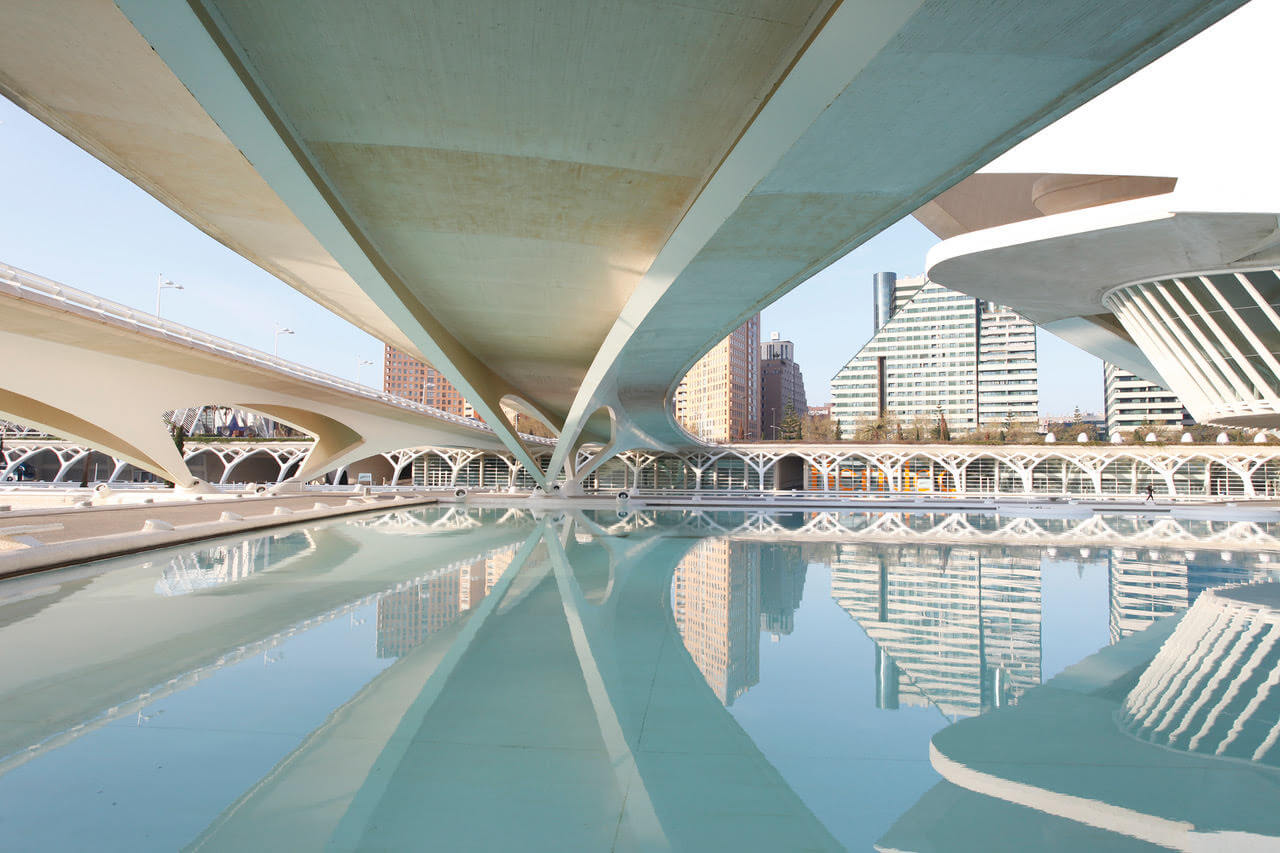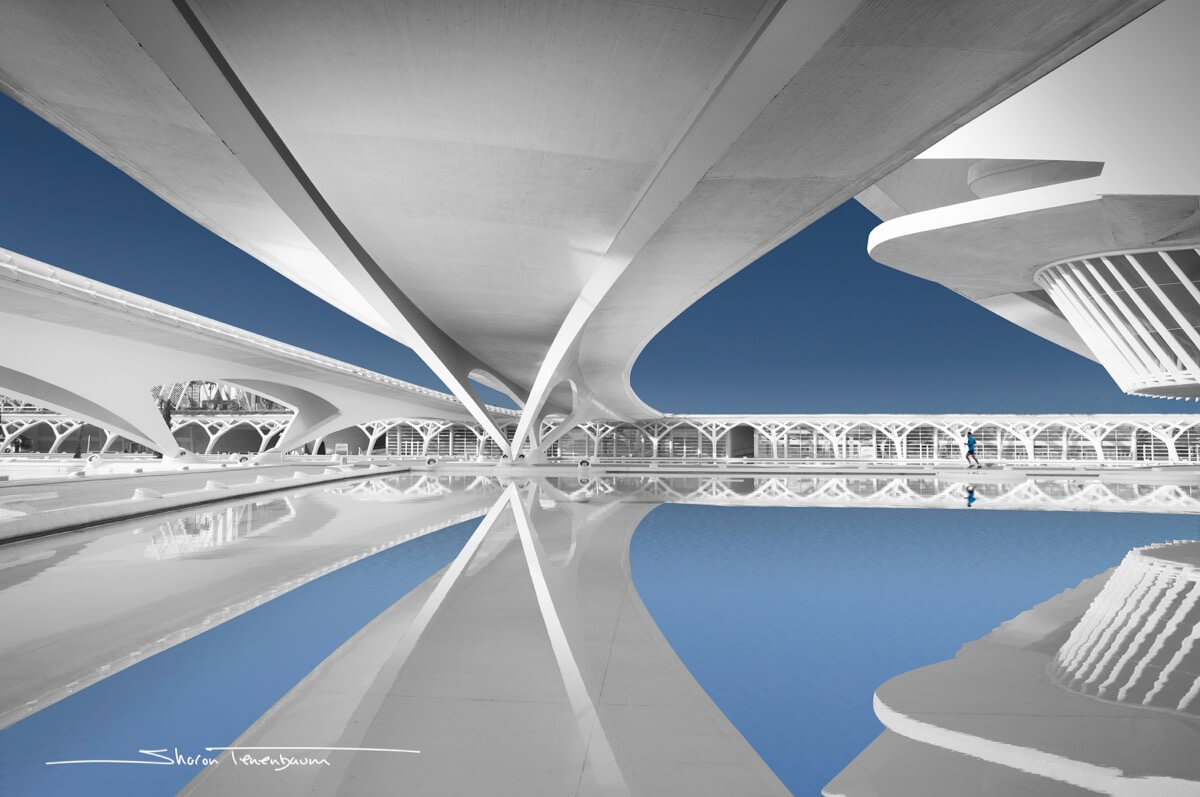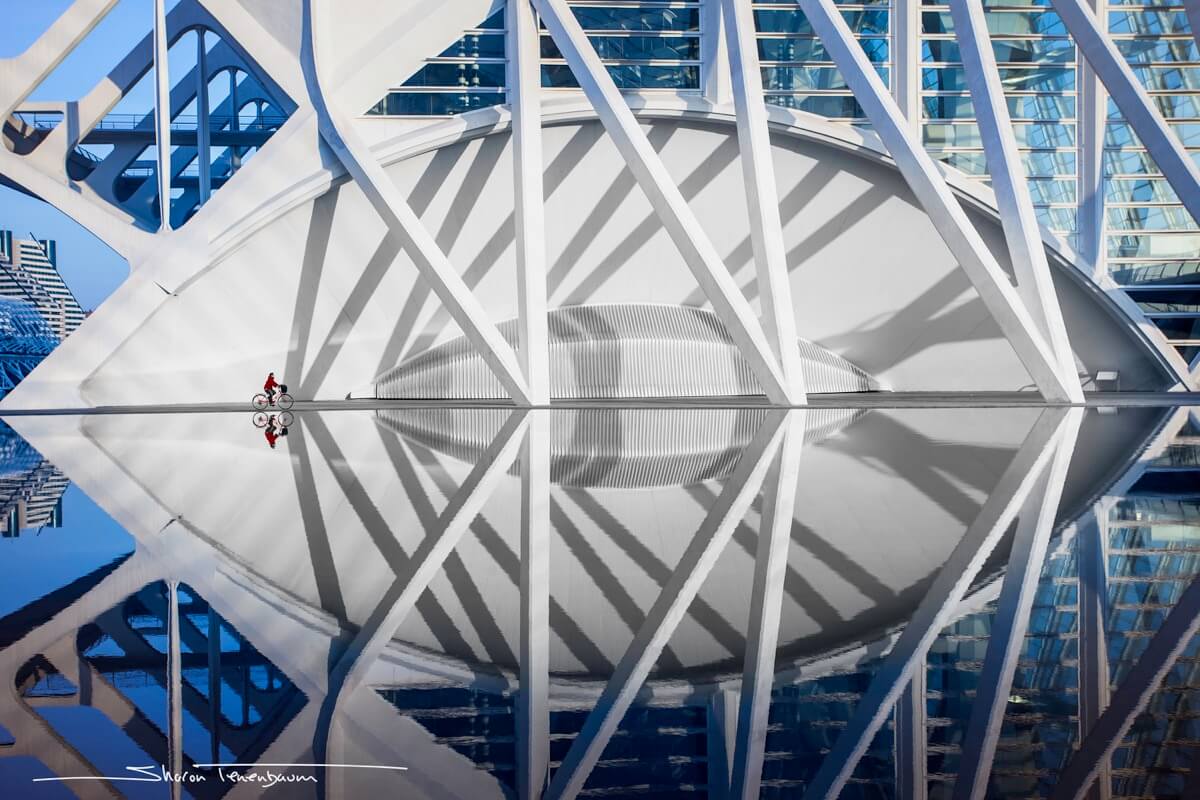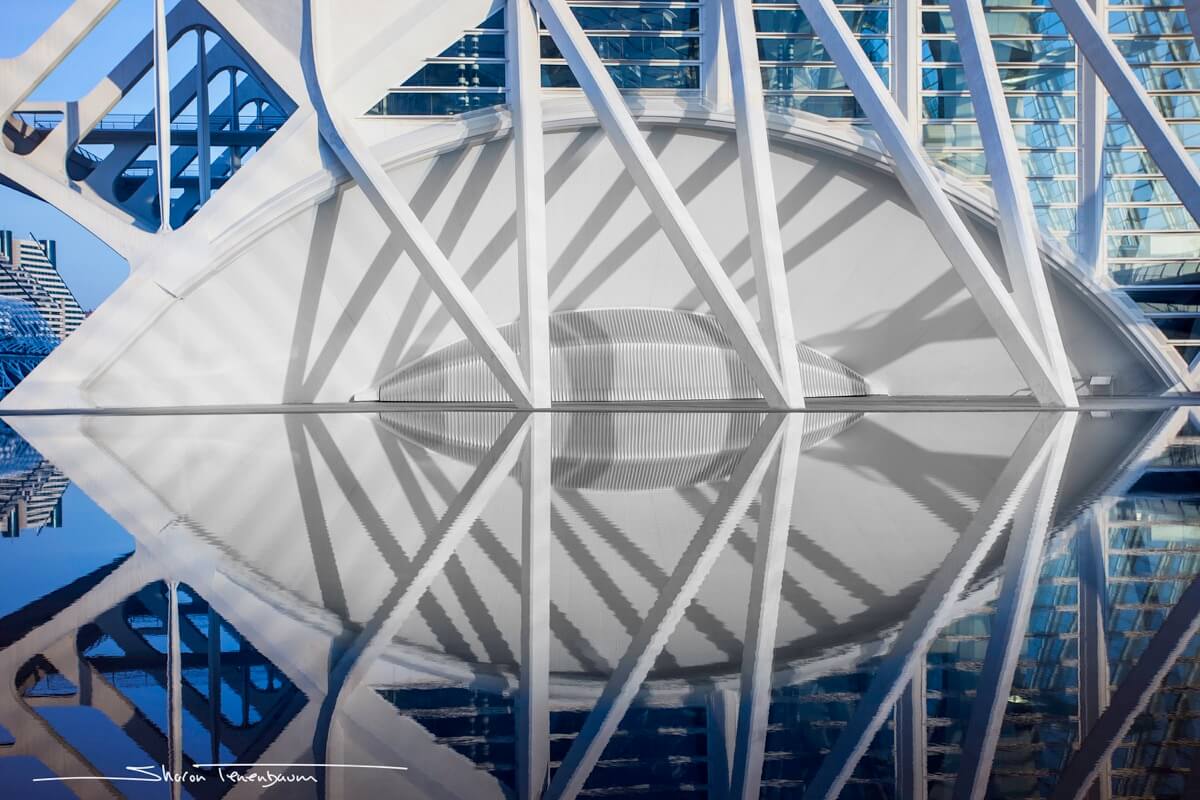Every person you ask might have a different answer to the question, what makes a great fine art architectural photograph? However, in my experience, there are a few key factors that are necessary for transforming a good image into a great one.
Great architectural images often follow these 3 features:
- Composition. In architectural photography, you need to use the language of geometric lines and shapes. These elements must create a harmonious balance within your frame. Without this component, not much can be done to salvage an image.
- Simplicity. Once the shot is made, ask yourself: “What elements in the image are not adding to the story?” In other words, try to simplify your scene by eliminating unnecessary details.
- Post-processing. Once the two factors above are covered, the work on post-processing begins. If you are familiar with my work, you might be aware that I’m a strong advocate of ‘creating’ an image and not ‘capturing’ one. This means accentuating and exaggerating the compositional elements mentioned above, and creating depth, volume, and balance through selective lighting.
Image 1 – BEFORE: cluttered, unprocessed and without a person in the frame. Even though the compositional foundation is present, there is still much work to be done on decluttering and gradient lighting.

Image 2 – AFTER: ‘cleaning’ the image of unnecessary details and implementing gradient lighting.

Until recently, this is where my creative process stopped. I don’t want to elaborate too much on the features listed above; instead, I want to talk about an element in architectural photography which I’ve only lately begun exploring.
Creative Shift
As architectural fine art photography is my passion, it’s been the subject of my images for over a decade now. My path of creating this body of work was a path of self-discovery. Even though some of my earlier architectural images are stellar and I would not have done anything different with them today, in my newer work, I am embarking on a creative shift. This shift is taking my architectural images in a different direction, so now, they are not just about celebrating form, but also about human interaction with the architectural environment.
Architectural structures, by their nature, are designed to serve a purpose for people. By eliminating people out of the composition, the photographer is celebrating the art of geometry and engineering above anything else. As magnificent as the design might be, by including a human element in the composition, the image takes on a new (and different) life form. The benefits are three-fold:
First, it adds a sense of life and warmth to an otherwise cool scene. An architectural image is naturally cold, comprised of concrete, steel and/or wood. By including even a single person in the image, we are warming up the scene and crossing the boundaries from the inanimate to the animate.
Second, it gives a structure a sense of scale and comes closer to the architect’s original intent in design, which is serving people for a specific purpose. For instance, Middle Age Gothic churches were designed to dwarf the scale of a human in comparison to the House of God they were entering. A church was designed to be of an enormous scale to give the parishioners an ‘otherworldly’ experience. If you walked into a Middle Age church and did not get that feeling, then the architect did not do his job right. This was done with the intention of making one feel small in the presence of the Almighty God. Likewise, an image of a church that depicts the sense of scale by including a human reference would convey that concept whereas the image without one would not.
Lastly, by adding a single person, we are giving the viewer’s eye a resting point. The psychological reason for this I can’t say, but it’s a fact. We tend to first spot the person in the image and use the rest as a background. That makes the image more intriguing on a few levels. First, as the photographer/artist, you now have the power to direct the attention of your viewers. You are saying to them: “Start here.” Second, it helps to simplify a scene that otherwise can be too busy with lines and shapes (as in the image below). Third, and maybe most important, it adds asymmetry or shifts the ‘center of gravity’ of an image to create a more intriguing composition.
Looking at the image below, we can see all the points I stated above exemplified, as the image without the cyclist is lacking warmth, a sense of scale and a resting point.
Sharon Tenenbaum teaches Fine Art Architectural Photography Workshops around the world. To learn more about Sharon’s work and details about her upcoming workshops, please visit: SharonTenenbaum.com


